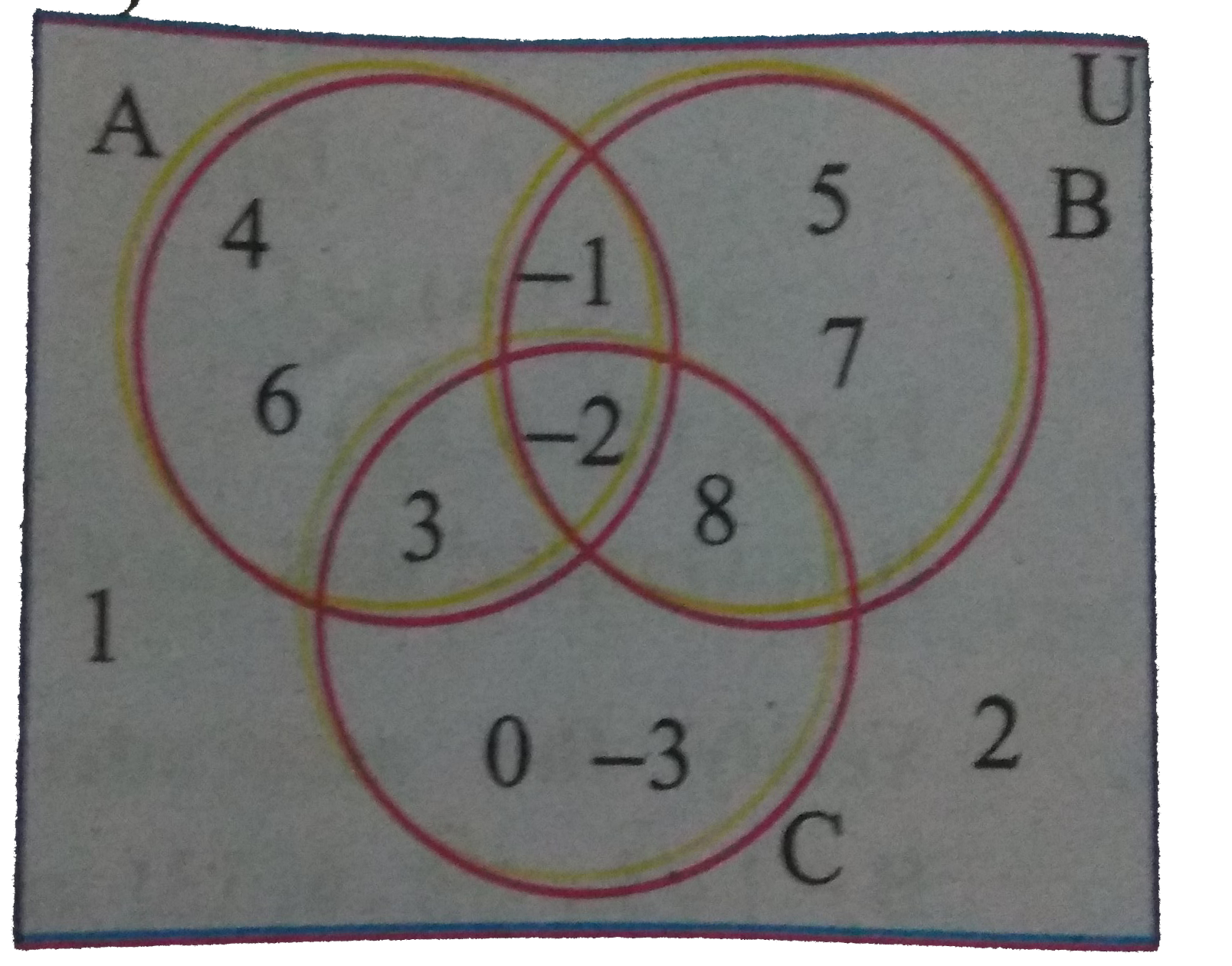Let A = {b, d, e, g, h} and B = {a, e, c, h} verify that n(A−B)=n(A)−n(A∩B)Solution in Tamil
Step by step video & image solution for Let A = {b, d, e, g, h} and B = {a, e, c, h} verify that n(A-B)=n(A)-n(AcapB) by Maths experts to help you in doubts & scoring excellent marks in Class 9 exams.
Updated on:21/07/2023Topper's Solved these Questions
- SET LANGUAGEBOOK - SURA PUBLICATIONCHAPTER - SET LANGUAGEEXERCISE - EXERCISE 1.5
19 Videos
- SET LANGUAGEBOOK - SURA PUBLICATIONCHAPTER - SET LANGUAGEEXERCISE - EXERCISE 1.6
19 Videos
- SET LANGUAGEBOOK - SURA PUBLICATIONCHAPTER - SET LANGUAGEEXERCISE - EXERCISE 1.3
45 Videos
- REAL NUMBERS BOOK - SURA PUBLICATIONCHAPTER - REAL NUMBERS EXERCISE - UNIT TEST
19 Videos
- STATISTICSBOOK - SURA PUBLICATIONCHAPTER - STATISTICSEXERCISE - Section -C
2 Videos
Similar Questions
Using the adjacent venn diagram, find the following sets :

(i) A - B
(ii) B - C
(iii) A'∪B'
(iv) A'∩B'
(v) (B∪C)'
(vi) A−(B∪C)
(vii) A−(B∩C)
View SolutionIf n(A) = 25, n(B) = 40, n(A∪B)=50 and n(B') = 25, find n(A∩B) and n(U).
View SolutionUsing the given venn diagram, write the elements of

(i) A
(ii) B
(iii) A∪B
(iv) A∩B
(v) A - B
(vi) B - A
(vii) A'
(viii) B'
(ix) U
View SolutionWhich one of the following , regarding sum of two irrational number , is true ?
View SolutionCalculate the mean of the following distribution using Assumed Mean Method.

View SolutionLet f, g and h be real-valued functions defined on the interval [0, 1] by f(x)=ex^2+e−x^2, g(x)=xex^2+e−x^2 and h(x)=x2ex^2+e−x^2 . If a,b, and c denote respectively, the absolute maximum of f, g and h on [0, 1], then a=b and c≠b (b) a=c and a≠b a≠b and c≠b (d) a=b=c
View SolutionABCD is a square E, F, G and H are points on AB, BC, CD and DA respectively, such that AE=BF=CG=DH. Prove that EFGH is square.
View SolutionABCD is a parallelogram, E and F are the mid-points of AB and CD respectively. GH is any line intersecting AD, EF and BC at G, P and H respectively. Prove that GP=PH
View SolutionLet A={b,d,e,g,h}andB={a,e,c,h} verify that n(A−B)=n(A)−n(A∩B)
View SolutionIf A={a,b,c,d,e},B={a,c,e,g}andC={b,c,f,g}, verify that
(A∩B)∪C=(A∪C)∩(B∪C).
View SolutionIf U = {a, b, c, d, e, f, g, h}, A = {b, d, f, h} and B = {a, d, e, h}, find the following sets.
(A∩B)'
View SolutionIf A = {a,b,c} B = {c, d, e, find n(A∪B)×n(A∩B)×n(AΔB).
View Solution(n(A ∪ B ∪ C))=n(A)+n(B)+n(C)-n(A ∩ B)-n(B ∩ C)-n(A ∩ C)+n(A ∩B∩ C) என்பதைக் கீழ்க்காணும் கணங்களுக்குச் சரிபார்க்க ? A{a,c,e,f,h},B={c,d,e,f}மற்றும் C={a,b,c,f}
View SolutionABCD is a square E, F, G and H are points on AB, BC, CD and DA respectively, such that AE=BF=CG=DH. Prove that EFGH is square.
View SolutionABCD is a square E, F, G and H are points on AB, BC, CD and DA respectively, such that AE=BF=CG=DH. Prove that EFGH is square.
View Solution
